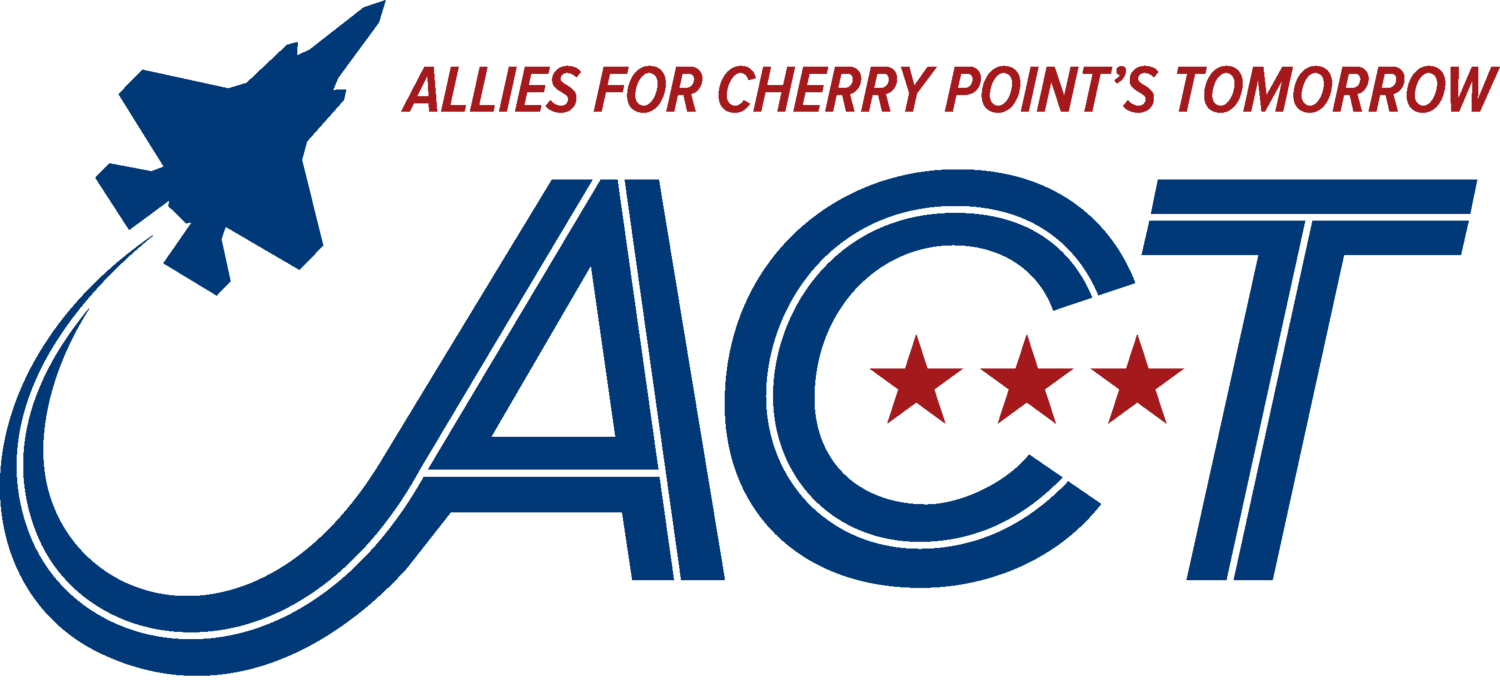Military Assets Help Drive Growth, Provide a Highly Skilled Workforce
Craven County, already home to key military aviation assets including the U.S. Marine Corps Air Station Cherry Point and the U.S. Navy Fleet Readiness Center East (FRC), is positioning itself as part of a regional aerospace corridor where companies creating the jobs of the future will locate and grow. “We already have a high concentration of aerospace companies and activities. We are already an aerospace corridor,’’ says Timothy Downs, director of economic development for Craven County. The broader North Carolina Aerospace Corridor will promote aviation and aerospace assets across Craven, Lenoir and Wayne counties.
The region’s place as the cradle of aviation is celebrated at the Eastern Carolina Aviation Museum in Havelock. Located at the Havelock Tourist and Event Center, the museum showcases the timeline of flight in the region and the models of aircraft that the region has repaired, modified and even helped design.
Craven County’s assets include Coastal Carolina Regional Airport in addition to Cherry Point and the FRC East. In addition, Early College Science, Technology, Engineering and Math Centers are available throughout the region. Other aviation and aerospace assets include Seymour Johnson Air Force Base in Wayne County, where the 4th Fighter Wing is located. The base, which had an economic impact of $705 million in 2016, is slated to receive the Air Force’s new aerial refueling tanker, the KC-46, in a few years. Over time, the KC-46 will replace the KC-135, which began service in the 1950s. The KC-46 was developed by Boeing from the 767 jetliner. The replacement of the KC-135 is expected to result in an increase of full-time, on-base personnel as well as dependents. In Lenoir County, the Kinston Regional Jetport offers one of the country’s longest runways and North Carolina Global TransPark, a 2,500-acre multi-modal transportation complex featuring a 26,000-square-foot terminal.
North Carolina Aerospace Corridor
The concept of the North Carolina Aerospace Corridor began taking shape when Downs considered the Pentagon’s decision to base the nation’s newest fighter jet, the F-35 Lightning II, at MCAS Cherry Point. “How can we capitalize on this and grow when the F-35 comes, particularly the ability to attract F-35 suppliers?” Downs recalls thinking. MCAS Cherry Point and Fleet Readiness Center East have a tremendous impact on the local economy. FRC East is North Carolina’s largest single site employer east of I-95. At MCAS Cherry Point, 9,100…
$845M MCAS Cherry Point payroll $2.1B Cherry Point’s total economic impact
…military personnel and 5,100 civilians are at work each day. The base has a payroll of $845 million. When economic activity by retirees is considered, as well as maintenance, construction and other activities on the base, the total economic impact of MCAS Cherry Point is $2.1 billion, says Operations Officer Mike Barton. At the base, the 2nd Marine Aircraft Wing operates aircraft including the KC-130J Hercules, EA-6B Prowlers, AV-8B Harriers, and RQ-21A Blackjack (an unmanned aircraft).
Maintaining Preparedness
“The Prowlers here are the only ones in the Marine Corps and are being phased out over the next couple of years. Eventually, the Harriers will also be replaced by the F-35B Lightning II, the fifthgeneration fighter that is replacing multiple aircraft,” says Barton. The 29,000-acre air station also operates a detachment of UC-35 (Cessna Citation) jets that transport personnel globally for the Department of Defense. At Fleet Readiness Center East, about 40 Marine and Navy personnel and approximately 3,800 civilians are at work supporting aircraft including the AVV-22 Osprey, UH-1N Huey, H-53E Super Stallion, MH-53E Sea Dragon, and the F-35B Lightning II. They also support the F/A-18 Hornet and the UH-1Y Venom. The FRC provides service for four aircraft engines and produces more than 20,000 components supporting nearly 200 different types, models and series of aircraft each year. It manufactures nearly 120,000 parts and provides engineering and logistics support for all Navy rotary wing, vertical and short take-off and landing aircraft, C-130 aircraft and other systems. “Aviation and aerospace are important, growing industries with great potential,” says Downs.
Find more about Craven County’s aerospace industry at livability.com/craven-county

